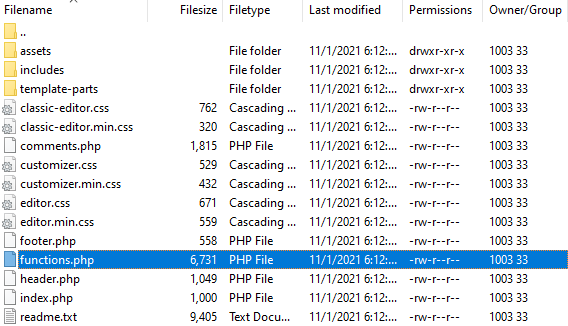Are you curious about PyTorch and its benefits in the world of machine learning?
We will explore what PyTorch is, how it works, and the advantages it offers compared to other frameworks like TensorFlow.
Dive into the concept of PyTorch tensors and neural networks, real-world use cases, and a brief history of this powerful open-source library.
Discover more about PyTorch and its applications in various fields!
Key Takeaways:
Contents
- 1 Key Takeaways:
- 2 Introduction to PyTorch
- 3 Benefits of PyTorch
- 4 Comparison Between PyTorch and TensorFlow
- 5 PyTorch Tensors
- 6 PyTorch Neural Networks
- 7 Top Use Cases of PyTorch
- 8 History of PyTorch
- 9 Example of PyTorch Implementation
- 10 Additional Resources for PyTorch
- 11 Frequently Asked Questions
- 11.1 What is PyTorch and why is it important for machine learning?
- 11.2 How does PyTorch compare to other machine learning libraries?
- 11.3 Can PyTorch be used for both research and production purposes?
- 11.4 What are the primary features of PyTorch?
- 11.5 How can I get started with PyTorch?
- 11.6 Is PyTorch suitable for beginners in machine learning?
- PyTorch is an open-source machine learning library developed by Facebook’s AI Research lab.
- It is used for computer vision and natural language processing, and offers benefits such as flexibility and ease of use.
- PyTorch has a rich history and is constantly being improved upon, making it a popular choice for implementing neural networks and other applications.
Introduction to PyTorch
PyTorch is a Python-based machine learning framework developed by Adam Paszke, Soumith Chintala, and others at Meta. It is known for its flexibility, ease of use, and dynamic computation graph capabilities.
Originating from the need for a more flexible machine learning tool, PyTorch was created to provide developers with a framework that offers both simplicity and robustness. The team behind its development focused on building a platform that could adapt to the rapidly evolving field of artificial intelligence. One of the standout features of PyTorch is its BSD license, which enables users to modify and distribute the code freely. PyTorch boasts exceptional GPU support, enableing users to leverage the power of accelerated computing for complex deep learning tasks. The framework’s efficient tensor operations further enhance its appeal, enabling seamless manipulation and processing of multidimensional data structures.
What is PyTorch?
PyTorch is a machine learning framework widely used for building deep neural networks by researchers and data scientists. It offers advanced features like TorchScript for optimizing and deploying models efficiently.
PyTorch’s flexibility and scalability make it a popular choice in the field of machine learning. Researchers leverage its dynamic computation graph feature, enabling them to modify the network architecture on the go, a key advantage when experimenting with new models and concepts.
The seamless integration with Python simplifies the development process, allowing users to take advantage of Python’s extensive library ecosystem. This versatility makes PyTorch suitable for a wide range of applications, from natural language processing to computer vision.
How Does PyTorch Work?
PyTorch operates using computational graphs to optimize and execute machine learning models efficiently. It supports tensor operations similar to NumPy and allows conversion of models to TorchScript for production use.
When looking into the architecture of PyTorch, one finds that computational graphs play a pivotal role in tracking the flow of data and operations within a model, enabling efficient optimization through techniques like backpropagation. These graphs depict how tensors flow through the layers of the neural network, facilitating automatic differentiation and gradient computation.
A significant advantage of PyTorch lies in its resemblance to NumPy, making it easier for users familiar with NumPy to transition seamlessly. This enables researchers and developers to leverage their existing knowledge in array computations and easily apply it to building and training neural networks using PyTorch.
Benefits of PyTorch
PyTorch offers numerous benefits to AI developers and researchers, such as seamless integration with deep neural networks, efficient handling of tensors, and extensive support for custom model architectures.
One of the key advantages of PyTorch lies in its incredible support for deep neural networks. By leveraging PyTorch, developers can easily construct complex neural network architectures without the burden of low-level coding intricacies. This not only saves time but also allows for rapid experimentation and iteration in AI projects.
PyTorch’s tensor manipulation capabilities enable users to perform efficient mathematical operations on multi-dimensional arrays, a crucial aspect in AI model development. PyTorch’s flexibility in creating custom models enables researchers to tailor their solutions to specific needs, providing a versatile platform for innovation and advancement in the field of artificial intelligence.
Comparison Between PyTorch and TensorFlow
When comparing PyTorch and TensorFlow, both are renowned for their support of deep neural networks and GPU acceleration. PyTorch excels in dynamic graph creation, while TensorFlow is favored for its scalability and ONNX compatibility.
PyTorch’s strength lies in its dynamic computation graph, making it more suitable for research and experimentation due to its flexibility in defining and altering the network architecture on-the-go. On the other hand, TensorFlow’s highly optimized runtime system enhances its efficiency for large-scale distributed training and production deployment.
PyTorch’s seamless integration with ONNX ensures smooth interoperability with popular deep learning frameworks, enabling easy model sharing and deployment across various platforms. In contrast, TensorFlow boasts a broader ecosystem and pre-built models, enhancing its usability and efficiency for projects requiring standardized implementations and extensive community support.
PyTorch Tensors
PyTorch tensors are fundamental data structures crucial for building deep neural networks, offering functionalities similar to NumPy arrays and optimized for GPU computing using CUDA.
Tensors in PyTorch play a vital role in storing and processing multi-dimensional data efficiently, providing a powerful framework for implementing various machine learning algorithms. Unlike NumPy arrays, PyTorch tensors are specifically designed for deep learning tasks, offering functionalities such as automatic differentiation and GPU acceleration. This allows for seamless integration with CUDA, enabling accelerated numerical computations on supported GPUs, which is essential for training complex neural networks on massive datasets.
Differences from Physics “Tensors”
In PyTorch, tensors differ considerably from their physics counterparts. These tensors are specialized data structures used for numerical computations in deep learning models.
PyTorch tensors are meticulously designed to expedite complex mathematical operations commonly found in neural networks. PyTorch tensors are adaptable and efficient, enabling smooth integration with various matrix operations essential for training models. Unlike traditional physics tensors, PyTorch tensors prioritize speed and scalability, crucial for handling large datasets and intricate computations required for cutting-edge machine learning tasks. The inherent flexibility of PyTorch tensors enables dynamics such as auto-differentiation, fundamental for optimizing model parameters efficiently.
PyTorch Neural Networks
PyTorch is widely acclaimed for its neural network capabilities, enabling the creation and training of complex deep neural networks efficiently, especially when leveraging CUDA for GPU acceleration.
By leveraging the capabilities of PyTorch, developers can build intricate neural networks with ease, taking advantage of its extensive library of tools and functionalities. Deep learning architectures benefit greatly from PyTorch’s flexibility, allowing for seamless integration of various layers and modules to construct sophisticated models.
The integration of PyTorch with CUDA for GPU-accelerated training results in significant speed improvements, making it ideal for handling large datasets and computationally intensive tasks. This combination enhances the overall performance and efficiency of the training process, enabling faster iteration and experimentation in model development.
Top Use Cases of PyTorch
PyTorch finds extensive applications in AI, including Natural Language Processing (NLP) and Reinforcement Learning (RL), demonstrating its versatility and effectiveness in various domains.
Within the realm of Natural Language Processing (NLP), PyTorch is widely used for tasks like sentiment analysis, text classification, machine translation, and named entity recognition. Its dynamic computation graph feature and flexibility make it a top choice for developing sophisticated NLP models that require complex processing of textual data.
In the domain of Reinforcement Learning (RL), PyTorch offers a seamless environment for building and training reinforcement learning algorithms. Its ability to handle dynamic graphs efficiently enables RL practitioners to design advanced models for game playing, robotics, and autonomous systems. This adaptability and success in different AI domains showcase PyTorch as a robust framework for diverse applications.”
History of PyTorch
The history of PyTorch traces back to its inception by Adam Paszke and Soumith Chintala, initially developed at Facebook and later supported by the Linux Foundation through collaborations like Caffe2.
This popular deep learning framework has a rich historical background, evolving from its seeds planted by Paszke and Chintala to becoming a powerhouse in the AI community. Notably, PyTorch’s roots can be traced back to the torch library, which was widely used in the early 2000s for scientific computing. Over the years, the torch library evolved into PyTorch, incorporating dynamic computation graphs and a user-friendly interface.
Example of PyTorch Implementation
An illustrative example of PyTorch implementation involves creating and training a neural network model using PyTorch within a Jupyter notebook environment, showcasing the practical application of the framework.
In this scenario, one begins by setting up the Jupyter notebook environment with the necessary libraries imported including PyTorch.
Next, the neural network architecture is defined using PyTorch’s flexible and efficient modules like Linear layers, activation functions, and loss functions.
The model is then trained by iterating through the dataset, applying backpropagation for learning, and adjusting the weights to minimize the loss function. Monitoring the training progress through metrics such as accuracy and loss values provides insights into the model’s performance.
After training, the model is evaluated on a separate test dataset to assess its generalization ability. This evaluation stage helps in understanding the model’s effectiveness and potential areas of improvement.
Additional Resources for PyTorch
For those seeking further information and tools for PyTorch, exploring additional resources such as official documentation, tutorials, and NVIDIA GPU support can enhance the learning and development experience.
Official documentation from PyTorch’s website offers in-depth guides, API references, and tutorials for beginners and advanced users alike. Educational platforms like Coursera and Udacity provide courses specifically tailored to PyTorch, covering topics from basic tensor operations to building neural networks. Resources on optimizing PyTorch models on NVIDIA GPUs, including the NVIDIA Deep Learning Institute (DLI) and the CUDA Toolkit, can help users leverage GPU acceleration for faster training and inference.
See Also
For related topics and additional insights, you may want to explore further resources on PyTorch’s applications in AI, its relevance to data scientists, and its integration with NumPy for numerical computations.
PyTorch, known for its flexibility and ease of use, has become a popular choice among machine learning practitioners due to its dynamic computation graph mechanism that allows for quick prototyping and debugging. It offers a seamless integration with NumPy, providing a smooth transition for data scientists working with numerical data. The rich set of functionalities within PyTorch enables researchers to build complex neural network models efficiently, facilitating advancements in natural language processing, computer vision, and other AI domains.
References
The references section includes key works by Adam Paszke, Soumith Chintala, and other contributors, along with pivotal resources from Meta and comparisons with TensorFlow in the context of PyTorch development.
Adam Paszke is widely recognized for his significant involvement in the foundational development of PyTorch and his research contributions in the field of deep learning.
Soumith Chintala’s work has greatly influenced the evolution of PyTorch with innovations in GPU acceleration and neural network training algorithms.
Meta’s contributions to PyTorch have enhanced its capabilities in areas such as natural language processing and computer vision, pushing the boundaries of what the framework can achieve.
Comparing PyTorch with TensorFlow highlights the unique strengths and design philosophies of each framework, aiding developers in choosing the right tool for their specific needs.
External Links
Explore external links to discover more about PyTorch’s applications in AI research, deep neural network advancements, and GPU acceleration using CUDA for high-performance computing.
PyTorch has emerged as one of the most popular open-source deep learning libraries, offering a flexible platform for research and experimentation in the field of artificial intelligence. From computer vision to natural language processing, PyTorch’s versatility has contributed significantly to the development of cutting-edge AI applications. Many research papers and studies delve into the intricacies of deep neural networks and their practical implementations using PyTorch, showcasing the library’s capability to handle complex models efficiently.
The utilization of CUDA for accelerating computational performance in PyTorch has opened up avenues for more robust and efficient training of deep learning models, enabling researchers to tackle larger datasets and more complex problems in less time.
Frequently Asked Questions
What is PyTorch and why is it important for machine learning?
PyTorch is an open-source machine learning library for Python, based on Torch. It is used for a variety of applications such as computer vision and natural language processing, and is primarily developed by Facebook’s AI Research lab. PyTorch is important for machine learning because it provides a powerful platform for creating and training neural networks, making it easier for developers and researchers to work with complex data and algorithms.
How does PyTorch compare to other machine learning libraries?
PyTorch differentiates itself from other machine learning libraries by offering dynamic computational graphs, which allow for easier debugging and more flexibility in model building. Additionally, PyTorch is known for its user-friendly interface and large community support, making it a popular choice for machine learning projects.
Can PyTorch be used for both research and production purposes?
Yes, PyTorch is suitable for both research and production purposes. It provides a seamless transition from prototyping to production, allowing developers to easily deploy their models in a variety of environments. This versatility makes PyTorch a valuable tool for machine learning projects at any stage.
What are the primary features of PyTorch?
Some of the main features of PyTorch include its dynamic computational graph, automatic differentiation, and support for distributed computing. It also offers a variety of tools for data loading, model building, and visualization, making it a comprehensive library for machine learning tasks.
How can I get started with PyTorch?
To begin using PyTorch, you can download it from its official website and follow the installation instructions. There are also numerous tutorials and resources available online to help you learn the basics and start building your own machine learning models with PyTorch.
Is PyTorch suitable for beginners in machine learning?
While PyTorch does have a relatively gentle learning curve compared to other libraries, it is still recommended for individuals who have some experience with Python and deep learning concepts. However, with the abundance of resources and community support available, beginners can also learn and utilize PyTorch effectively for their machine learning projects.





